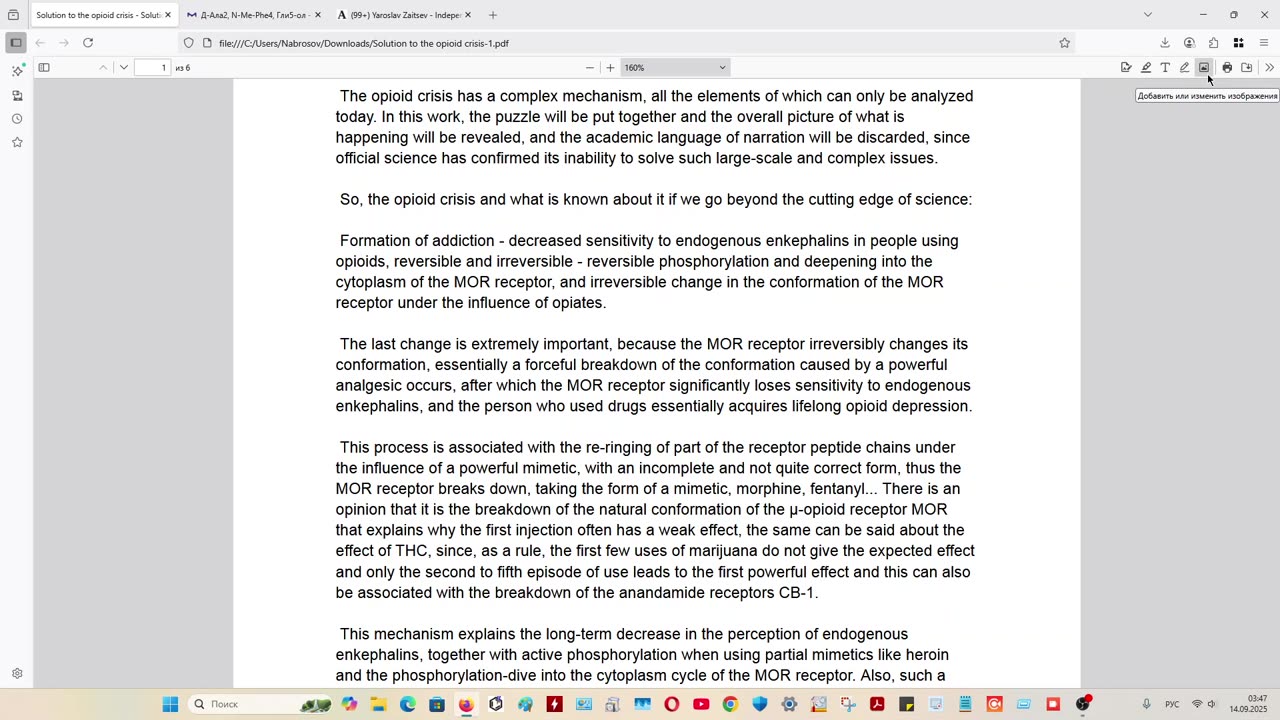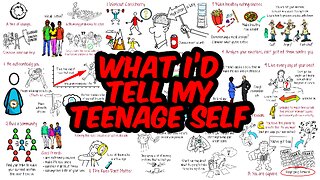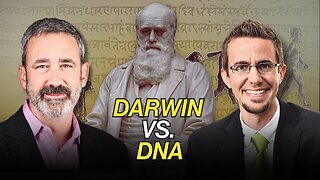Premium Only Content

Solution To The Opioid Crisis. Решение Опиоидного Кризиса.
Solution To The Opioid Crisis.
Yaroslav Grigorievich Zaitsev 0000-0002-0069-2997
The opioid crisis has a complex mechanism, all the elements of which can only be analyzed today. In this work, the puzzle will be put together and the overall picture of what is happening will be revealed, and the academic language of narration will be discarded, since official science has confirmed its inability to solve such large-scale and complex issues.
So, the opioid crisis and what is known about it if we go beyond the cutting edge of science:
Formation of addiction - decreased sensitivity to endogenous enkephalins in people using opioids, reversible and irreversible - reversible phosphorylation and deepening into the cytoplasm of the MOR receptor, and irreversible change in the conformation of the MOR receptor under the influence of opiates.
The last change is extremely important, because the MOR receptor irreversibly changes its conformation, essentially a forceful breakdown of the conformation caused by a powerful analgesic occurs, after which the MOR receptor significantly loses sensitivity to endogenous enkephalins, and the person who used drugs essentially acquires lifelong opioid depression.
This process is associated with the re-ringing of part of the receptor peptide chains under the influence of a powerful mimetic, with an incomplete and not quite correct form, thus the MOR receptor breaks down, taking the form of a mimetic, morphine, fentanyl... There is an opinion that it is the breakdown of the natural conformation of the μ-opioid receptor MOR that explains why the first injection often has a weak effect, the same can be said about the effect of THC, since, as a rule, the first few uses of marijuana do not give the expected effect and only the second to fifth episode of use leads to the first powerful effect and this can also be associated with the breakdown of the anandamide receptors CB-1.
This mechanism explains the long-term decrease in the perception of endogenous enkephalins, together with active phosphorylation when using partial mimetics like heroin and the phosphorylation-dive into the cytoplasm cycle of the MOR receptor. Also, such a mechanism may be important in the context of the fight against cannabinoid addiction, since this molecular mechanism can open up an understanding of the long-term effects of addiction, it can also be the basis for the development of drugs capable of restoring receptor functionality after drug use. For example, PZM21, DAMGO and similar pro-endorphin full mimetics of endorphins are capable of activating rephosphorylation and increasing sensitivity to morphine (as well as to enkephalins) of the MOR receptor, but if the receptor conformation is irreversibly distorted by the powerful effect of the opioid, there will be no complete return to endorphin sensitivity and the person will receive acquired "endorphin depression" which will require a long course of replacement therapy.
Here we come to several key points related to addiction, addiction is not just a consequence of tolerance or neurotransmitter flexibility, but also possibly a consequence of irreversible conformational changes in receptors. Addiction requires constant, albeit minimal, doses of painkillers, not because of the withdrawal pain syndrome, but because even excessive concentrations of enkephalins are unable to cause a native response of the MOR receptor and we are talking more about mental health, which leads to a serious conclusion - replacement therapy does not necessarily have to be based on analgesic opioids. these can also be modulating subtle agents to analgesic activity, such as ultra-light mimetics with a low ceiling of activity.
And also addiction requires a more advanced pharmacological treatment regimen, this is the use of reduced dosages and detox, after which the restoration of sensitivity through rephosphorylation, for example, using drugs like PZM21 and DAMGO. And a completely new possible approach is the use of drugs like PZM21 and DAMGO, but with a fixed natural conformation, using a rigid bridge inside the structure and powerful mimetic ligands. Such structures, in theory, could play the role of enkephalins in the most native way, be extremely affine, have a high binding force, but at the same time they are deprived of natural mobility, they would not be configured to fit the shape of a broken receptor as mobile enkephalins do, but would straighten the shape of the MOR receptor, just as a curved part can be straightened using a strong mold, we are talking about the reverse breaking of the configuration and returning to the configuration most sensitive to endogenous enkephalins. Such drugs can literally re-conform the receptor to the original native conformation, which more firmly and fully binds enkephalins and thus return natural sensitivity to enkephalins. Such drugs can be both endorphin and cannabinoid in nature, because it is possible that anandamide receptors can also be subject to configuration breakdown under the influence of short and not entirely correct and harsh THC. These can be rigid pro-peptides, or finely calculated pro-enkephalins of a different nature, it can be cross-linked anandamide or more pro-anandamide rigid pro-native mimetics, which after a short course of treatment, could return the virgin sensitivity of receptors.
Thus, the return of receptor sensitivity to normal, both quantitatively and qualitatively at all levels of distortion of natural balance and conformations, is the key moment in overcoming addiction and for a full course of treatment and exit from the state of addiction, many more stages of therapy are needed than are practiced today. A full therapeutic course of addiction treatment can be many times more complex and subtle.
Wonders of Subtlety:
Now we come to the subtle aspects of addiction and possible new directions in overcoming addiction. And so, subtle effects, for example subtle pro-opioid effects that can be useful in two applications, subtle correction, subtle substitution therapy, and also a safe alternative to heavy drugs. Pharmacology does not consider substances with an extremely subtle effect on the endorphin system, since such drugs usually do not have analgesic potential. For example, some researchers associate the positive pharmacological qualities of alpha terpineol and its acetate from cardamom with its pro-opioid properties, just as the flavor of nutmeg melon with the pro-endorphin effects of these products. The author of this article is also inclined to consider these structures as ultra-light opioid mimetics, since their structure completely coincides with the morphine rule and correlates with known opiates, although it has an insignificantly small molecular weight and extremely low affinity. The author's works on the pharmacology of cardamom, ultra-light pro-opioids, cannabinoids and ultra-light replacement drugs could have been listed in the bibliography, but we agreed not to use an academic style of narration, if you wish, you can familiarize yourself with these works.
So, you can get acquainted with the whole cascade of the author's works in this direction, this is the part of rational design that the author has been developing for more than two decades, all publications are in the public domain and in the book collection of works.
What are ultra-light enkephalin mimetics and what advantage do they have:
Ultra-light mimetics usually have a low activity ceiling, often lower than analgesic activity. Such substances cannot be determined by the strength of the analgesic effect and they are not considered by modern science as opioids, since there are currently no sufficiently sensitive methods for testing such subtle agents. However, such subtle mimetics are able to increase endorphin tone, this is expressed in mental reactions such as anti-anxiety action, relief of stress and depression triggers, as a consequence of a natural increase in the body's resistance and immunity, some terpene compounds of cardamom, nutmeg melon, basil, agarwood and some others have such medicinal properties.
One of the main advantages of such natural and synthetic substances is their absolutely exceptional safety - such substances do not cause noticeable dependence, do not have a lethal effect, and also (this is a feature of some alcohol and terpene esters) they have a subtle but obvious effect, at a level completely unattainable for hard drugs - a very low start of effects, the effects are able to manifest themselves at the level of natural endorphins, while strong analgesics affect the mental sphere in high concentrations with a strong analgesic effect. Roughly speaking, this is a modulation of endorphin tone within the framework of everyday natural activity, for this reason cardamom or chocolate or nutmeg melon do not cause side effects and are completely legal and recommended for use by children, without special restrictions from the world of opioid drugs. The difference is obvious and it is catastrophic, super light opiates are at the diametrically opposite pole of properties and prospects.
What prospects can such subtle modulators of endorphin tone have? First of all, it is a subtle replacement therapy and subtle normalizing recreational use as an endorphin tonic (given the high level of stress and the decrease in the natural endorphin background, such a tonic effect could be normalizing).
Such substances have a very weak effect on the MOR receptor (probably directly, since they have quite a lot of endorphin radicals in their structure..), as a rule, such a weak impulse is not accompanied by a strong triggering of the arrestin pathway and does not lead to phosphorylation or immersion in the cytoplasm of the receptor, we are talking about background adjustments from the conditional background endorphin depression to the conditional background endorphin norm, normal endorphin tone. Since these substances have an extremely small molecular mass and fine affinity, they cannot tightly configure the enkephalin receptor, this is always a light and episodic effect at the limit of recognizable affinity, and even super high concentrations of such substances are unable to cause an overdose, since fine affinity does not allow strong effects to manifest, hence the low ceiling of activity. All this creates a unique pharmacological profile for the use of such substances as an "endorphin antidepressant" and as a drug for fine substitution therapy of opiates, after returning the sensitivity of MOR receptors to the native configuration, in order to compensate for residual effects. Such therapy can be much safer, since the drug has no analgesic effect, and the mental effect does not exceed the natural endorphin level of a healthy person and does not lead to tolerance and other mechanisms of negative response. Substitution therapy at a new level of safety and ease is possible and appropriate. But only after undergoing a more extensive and adequate addiction treatment therapy, which includes such elements as returning receptor sensitivity and returning the native configuration of receptors, and such substitution therapy is needed to correct the residual effects associated with the immersion of receptors in the cell, a decrease in the number of receptors and an incomplete return of receptors to full sensitivity and native configuration.
Thus, we have built a more complete and safe concept of combating the phenomenon of drug addiction itself, overcoming key obstacles that have not been fully reflected in the practice of modern therapy, we have provided an alternative to both heavy analgesics and existing conditionally safe (not safe) drugs for substitution therapy. But we have also formulated an approach to obtaining a safe pro-opioid with therapeutic and recreational effects, because the area of application is always blurred. since the regulatory system does not work properly, the clinic and the street are always saturated with recreational drugs, which leads to the opioid crisis, are the gates through which the crisis oozes from the countries of manufacturers, pharmaceutical companies...
The opioid crisis, as we have already established, can be associated with some new factors - a long-term irreversible change in the conformation and sensitivity of receptors, a high ceiling of activity of heavy opioids and strong analgesic activity leading to physical dependence and withdrawal syndrome. One of the ways to implement safer opioids is to search for drugs with G-protein selective action, as well as drugs-full mimetics of enkephalins, which lead less to surface phosphorylation and compression of the receptor disproportionately in the semi-pocket. Such drugs are safer, but not revolutionary, since the degree of their selective work is insufficient, and they work in a narrow window of dosages and effects.
There are also other components of the opioid crisis, this is the complexity of the endorphin system. Allosterically, the endorphin system affects dopamine, GABA, adrenaline and others, this is a special interaction, on special allosteric sites of receptors that activate the entire range of the reward system. Therefore, drugs that excite duplicate opioid systems are also dangerous, these are drugs such as alprazolam, pregabalin, dextromethorphan and some others. Such drugs have an indirect effect, but a direct effect is also possible when used together with alcohol, since alcohol reduces the selectivity of the MOR receptor. Pharmaceutical companies at this stage of pharmacology development have created 99% of the opioid crisis. Moreover, the whole concept of pharmacological opiates is flawed and as a consequence of this, 100% of all funds for the study of opioid drugs are directed to the development of powerful analgesics, and powerful analgesia is what is needed by 1% of opiate users, since 99% of users require only mental effects, the analgesic effect for them is only a side effect, for which they have to pay a high price - a strong withdrawal syndrome... Thus, pharmacology serves 1% of needs, and not 99%. And even replacement therapy drugs have significant analgesic potential and are unable to reduce dependence to zero, since their ratio of the mental required effect to the analgesic effect does not allow maintaining the mental state without having an analgesic effect, this is far from the described super light terpenes and their derivatives, in fact, in modern pharmacology there are simply no drugs that would correspond to the concept of complete withdrawal and complete return to normal, complete overcoming of dependence.
This happens because pharmacology does not consider the problem in full, but works only to create clinical drugs, forgetting that they all end up on the street. Thus, pharmacology works without feedback, and the subtlety and depth of research are insufficient to implement a correct approach to treating addiction and finding alternatives to hard drugs. Hard drugs are born of pharmacology, and pharmacology is also unable to recognize super light opiates, unable to see prospects in them, such an approach is a direct path to the opioid crisis and this is a phenomenon of systemic error, weak pharmacology and making money on addiction on the part of pharmacology, lack of understanding in academic circles, social platforms and government institutions.
A rollback to the original settings of the opioid system and an alternative to hard drugs on the gray market, a culture of understanding, an understanding of spices and food products, an understanding of the design of drugs and synthetic ultra-light drugs, this is the path to dividing into two niches - clinically hard drugs and light modulators of the enkephalin background on the world market, this is the path to a fully controlled solution to the opioid crisis.
Also, more correct clinical opiates can contribute to the resolution of the opioid crisis, these are intracellular opioids in the future, substances that directly activate the G protein inside the neuron cell. Such substances in theory should very well pass through lipid membranes, bind to the protein locus with which it binds to the back of the MOR receptor, and activate. This is definitely a high level of drug design, and I can only point out here that this is fundamentally possible since the energy of the enkephalin pocket is insignificant, the G protein can activate even alpha terpineol (the same one that modern pharmacology does not see point-blank), and this means that a direct intracellular activator of the G protein may not have a very large molecular mass and it can be quite mobile. Moreover, such a substance can be quite active, since the receptor is capable of activating one G-protein per unit of time, and the intracellular opioid can bind simultaneously to all G-protein if its concentration is high, which gives significant potential even if the molecule has low affinity. In the case of too low affinity and low ability to pass the lipid barrier, such direct activators of the G-protein of the MOR receptor can have a pseudo-complex structure and consist of several subunits, which is described by the author in the work on "pseudo-complex compounds on biopolymers". Such a solution can bring the safety and selectivity of powerful opioids to a new level.
Thus, we have outlined all possible additions and a complete strategy for solving the opioid crisis in the context of the author's works and most of the existing data on this topic.
The main steps towards resolving the opioid crisis considered in the paper were: full return of the endorphin system to its native sensitivity to enkephalins and configuration, replacement support of subtle residual effects at the subtle level with ultra-light non-analgesic pro-opioids, control of the pharmacology of recreational drugs, revision of the status of some GABA and benzodiazepine drugs, development of intracellular potent but safer analgesics, development of ultra-light pro-opiates for open access, control over the separation of recreational subtle drugs and heavy clinical drugs, new treatment protocols equipped with guidance and pharmacological support for the return of sensitivity to endorphins and, as a result, a complete reduction in dependence, the use of pro-opiates for recreational purposes that do not cause dependence and other long-term changes. The changes are grandiose, but they are structured, argued, and described in the author’s works.
The final and unifying part of these materials is this work, the purpose of which is a complete description of the proposed strategies and directions in pharmacology, drug design, consumer culture, and culture of understanding.
-
 LIVE
LIVE
Welcome to the Rebellion Podcast
12 hours agoDisney Star Tells People to Cancel Disney - WTTR Podcast Live 9/19
263 watching -
 LIVE
LIVE
Game On!
20 hours ago $0.96 earnedHappy FOOTBALL FRIDAY! Week 3 NFL Betting Preview!
977 watching -
 15:10
15:10
Michael Button
15 hours ago $2.35 earnedGroundbreaking Discovery at Giza Pyramids?
44.3K8 -
 18:11
18:11
Tactical Considerations
16 hours ago $1.71 earnedIs This the Best Truck Gun for 2025?
11.9K3 -
 8:37
8:37
The Art of Improvement
20 hours ago $0.71 earnedLife Lessons I’d Tell My Teenage Self
10.5K4 -

BEK TV
1 day agoTrent Loos in the Morning - 9/19/2025
12.3K1 -
 17:22
17:22
Adam Does Movies
13 hours ago $1.80 earnedIce Road: Vengeance - Movie Review
67K4 -
 45:05
45:05
Uncommon Sense In Current Times
18 hours ago $1.00 earnedDarwin vs. DNA | Dr. Nathaniel Jeanson on Creation Science, Evolution & the Case for Genesis
18.6K3 -
 32:19
32:19
The Lou Holtz Show
15 hours agoThe Lou Holtz Show S2 EP18 | Danica Patrick on Fearlessness, Faith & Finding Purpose #podcast
17.2K4 -
 23:41
23:41
The Official Corbett Report Rumble Channel
11 hours agoDiscord Democracy is Coming For Us All! - New World Next Week
17.9K16